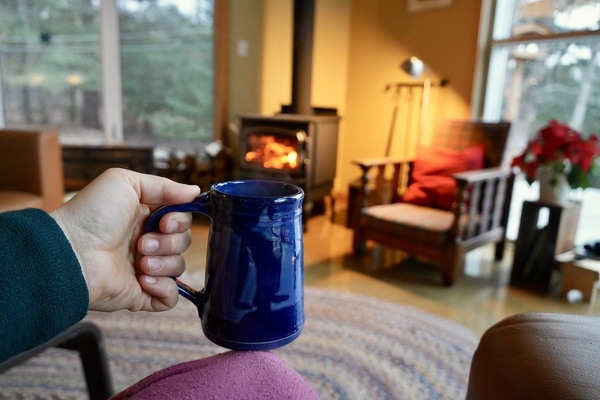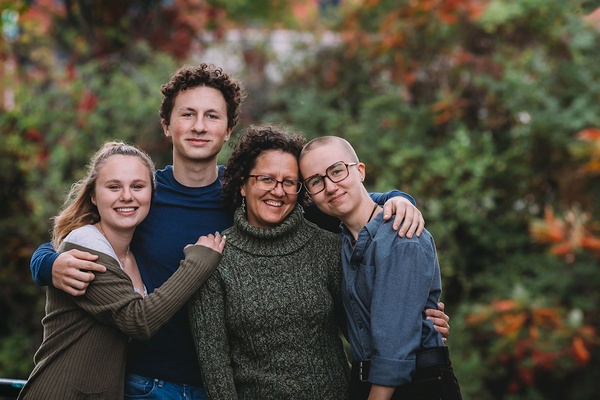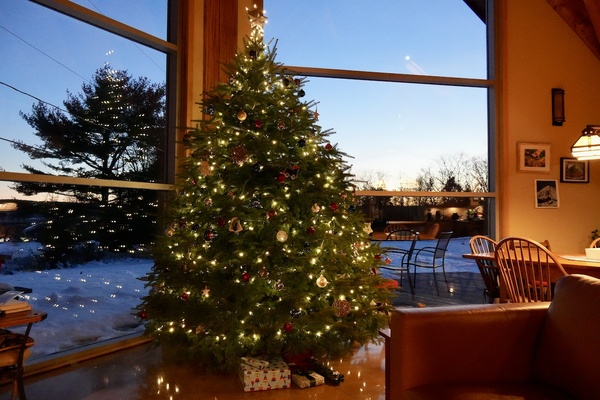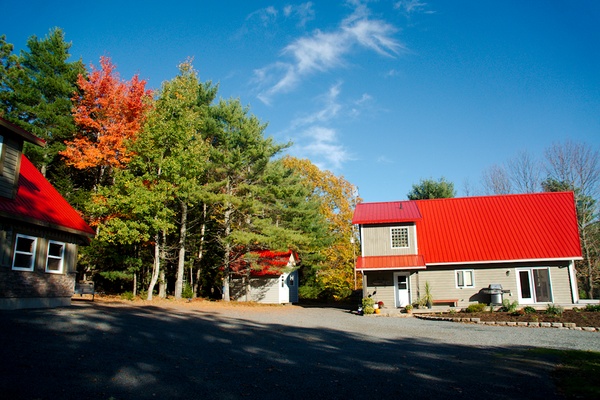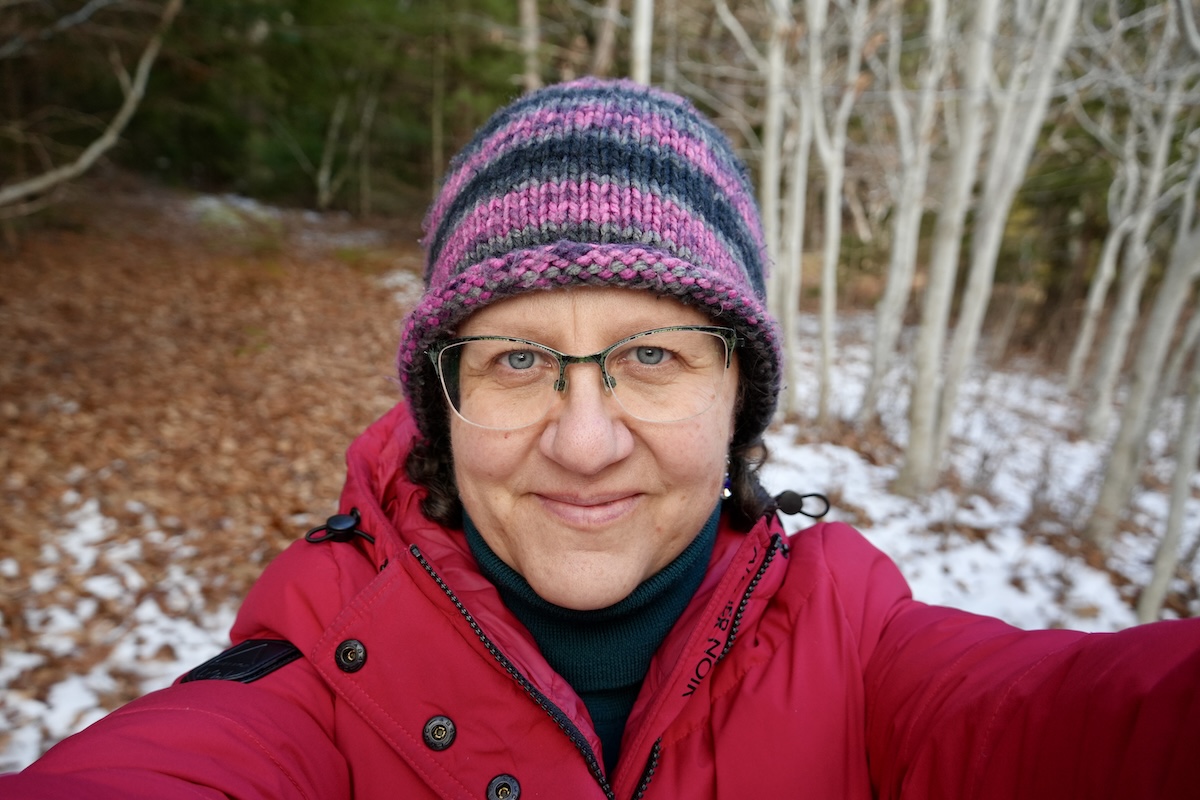Get posts by email
The meaning of making
December 2, 2017
In the basement of my great-grandmother's house, in the town in which I was born and raised, was a rug-weaving loom and a quilting frame. In my childhood recollection there was nearly always a rug, quilt, or both, on the go in my great-grandma's basement.
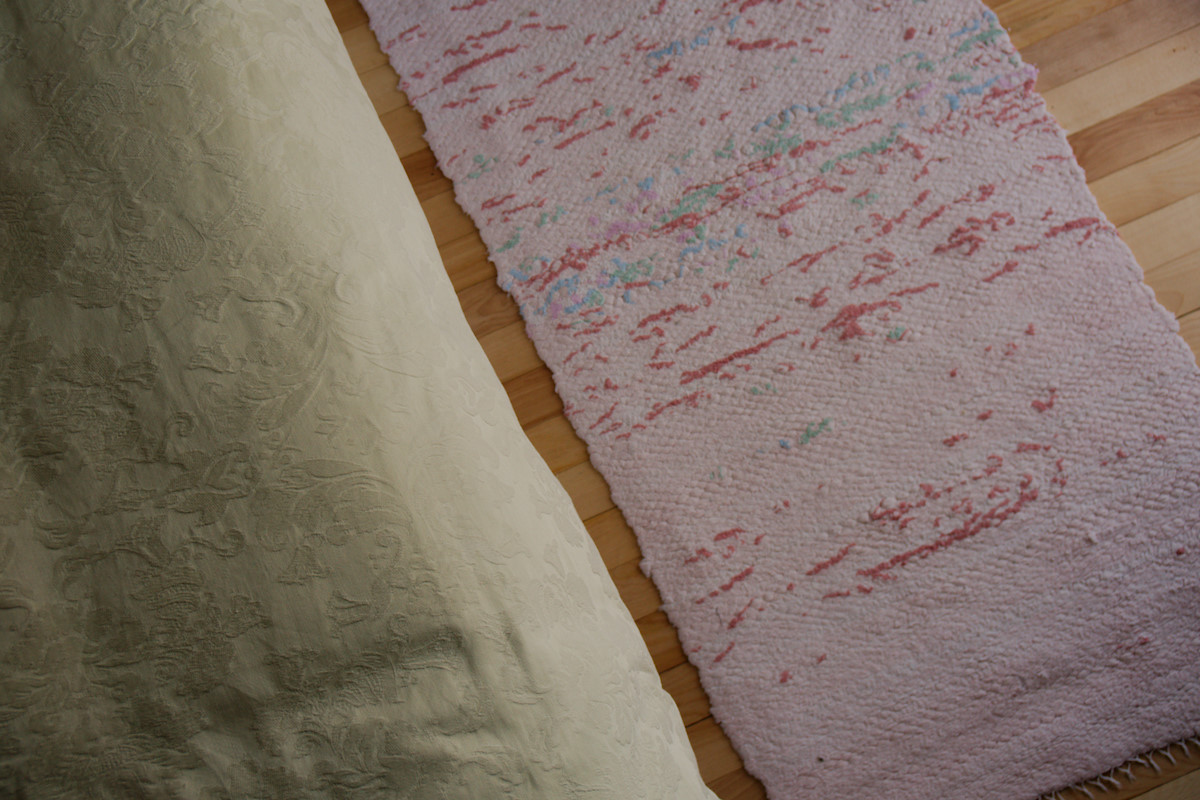
a rug from great-grandma's basement loom, circa 1999
My great-grandma, born before WWI, coming to adulthood and raising babies in the great depression, and living through the second great war, was the original incarnation of frugal and environmental. Like many women of her time. Not only did nothing go to waste in her home but she made useful, needful things out of scraps. She was up-cycling before up-cycling was a word.
As a child in the 1980's I didn't appreciate how hip my great-grandma was. Of course, she wasn't hip at the time, she was just living as she always had. There was no "green movement" going on in the small prairie town I grew up in, there was no recycling center. But there was my great-grandma making quilts from the rag bag and second-hand store finds; recycling old fortrel polyester dresses and sewing scraps into new blankets for beds.
Maybe you're not familiar with fortrel polyester quilts. Polyester was first introduced to the North American market in the 1950's as a wonder material that didn't need to be ironed, was long lasting, and cheaper to produce than natural fabrics. It spoke convenience, efficiency, and economy. Fortrel was a trademark name for a type of polyester. And Fortrel polyester clothing and fabrics were very popular for a time.
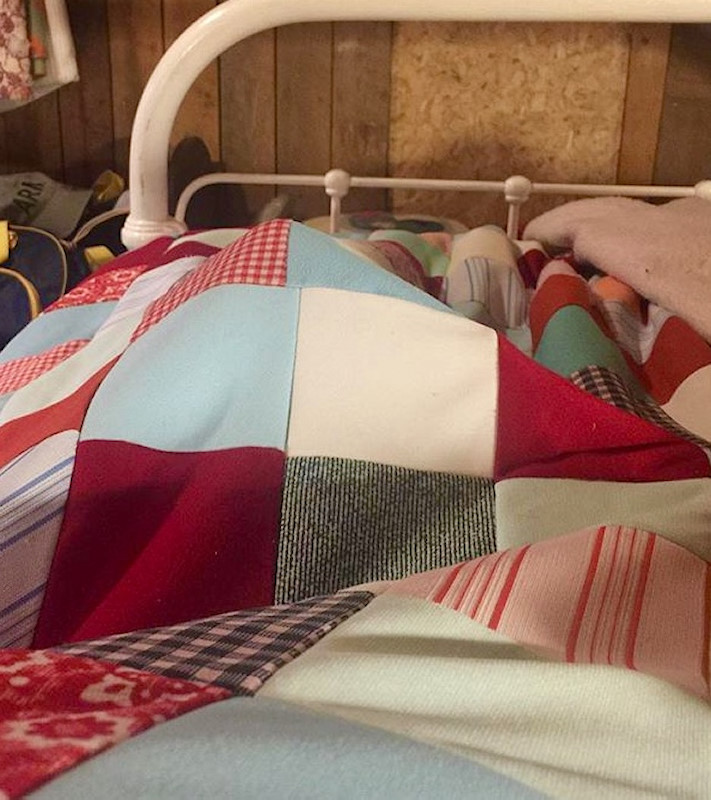
just this week my friend posted a photo on IG of her own grandma-made fortrel polyester quilt at the family cabin
These fabrics are very long lasting (which is an actual environmental issue, which I won't discuss here) and when the clothing was discarded because it was outgrown, out of fashion, stained, etc. most of the fabric was still very useable. Never mind the brand new bolts of fabric lining store shelves for the home seamstress. As 100% polyester clothing cycled out of fashion all that durable fabric had to go somewhere. For a certain generation of crafting women, like my great-grandmother, where it went was into quilts.
Fortrel polyester quilts are a quilting phenomenon. Women making something useful and warm out of discarded polyester. You can read a little blurb about it on this quilting blog.
These quilts never die because the polyester fabric never dies. Plaid pants and funky 60's housewife dresses live forever in these quilts.
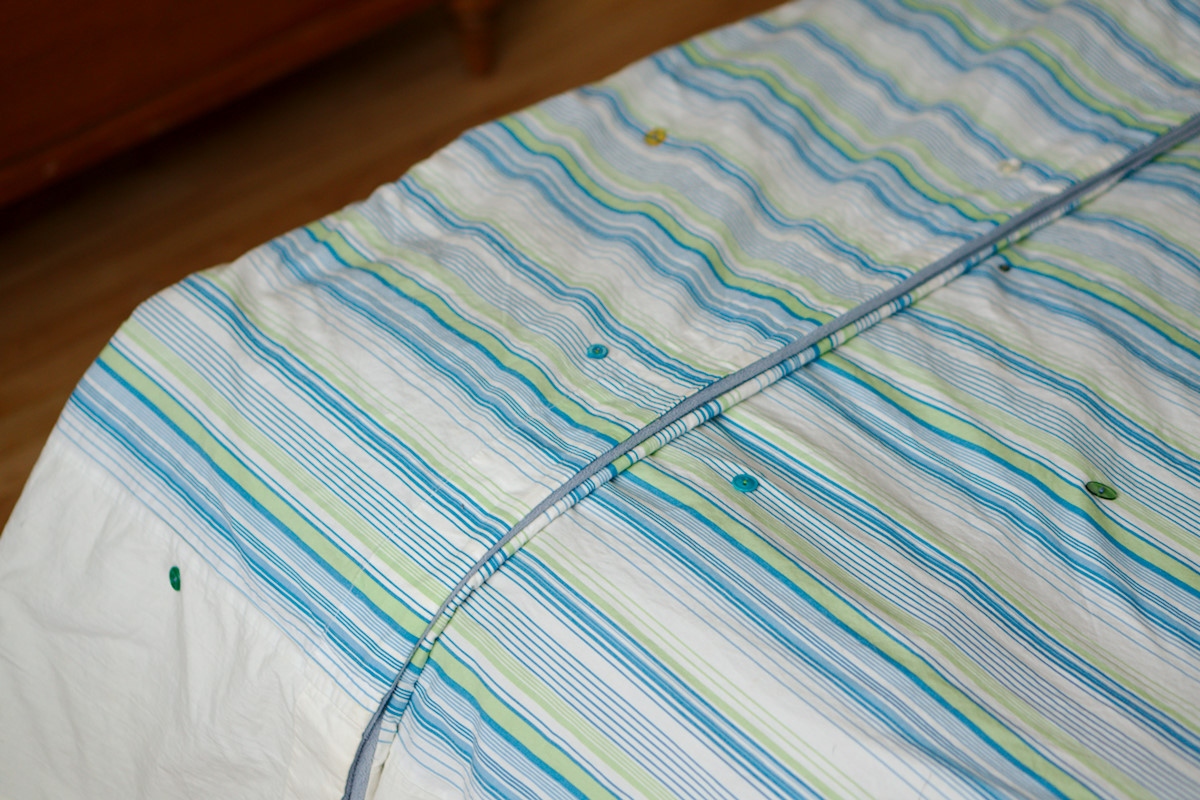
the only quilt I've made: out of bedsheets and a fleece blanket
my own upcycling, circa 2010
My great-grandmother made fortrel polyester quilts on the frame set up in her basement. She made these quilts for her children and many grandchildren.
My dad was one of those grandchildren.
We had a couple of these blankets in our house growing up. I'll be honest, they weren't my favorite. The quilt tops were kind of scratchy, and had funky color patterns (to my 80's child eyes). The fabric looked dated, because it was. Quilts made with old man pants and old lady dresses.
We used them for extra warmth and extra layers on our beds. They weren't the top-quilt or bedcover, which was usually matched with the room decor. But they were the layer keeping us warm. Or the blanket we pulled out of the cupboard when making up extra beds for guests.
Now, when we go to my parent's house for Christmas, and the whole family is there, and all the beds and free floor space is used for sleeping, all the quilts come out. And it's like a return to my childhood. Great-grandma's quilts keeping everyone warm.
Like I said, these quilts will never die. I'll probably inherit these blankets from my mom (hint, hint Mom), and eventually pass them onto my own children. So that generations of Elsie Tabler Breitkreuz' descendents will have the privilege of sleeping under the synthetic fabrics of the 1950's, 60s and 70s; old man pants and old lady dresses forever.
(If you want to see examples of fortrel polyester quilts I recommend A Recycling Grandmother - International Woman's Day Special from Good Earth Quilting and this article on a Seniors Quilting Bee in Saskatchewan published in 2003.)
When I was younger these quilts were aesthetically suspect. They now speak one thing to me: love.
In my early adulthood, I think I was not quite twenty, we had a family reunion on my Dad's side of the family, and my grandmother (my great-grandma's daughter) contributed a brand-new polyester quilt to the raffle.
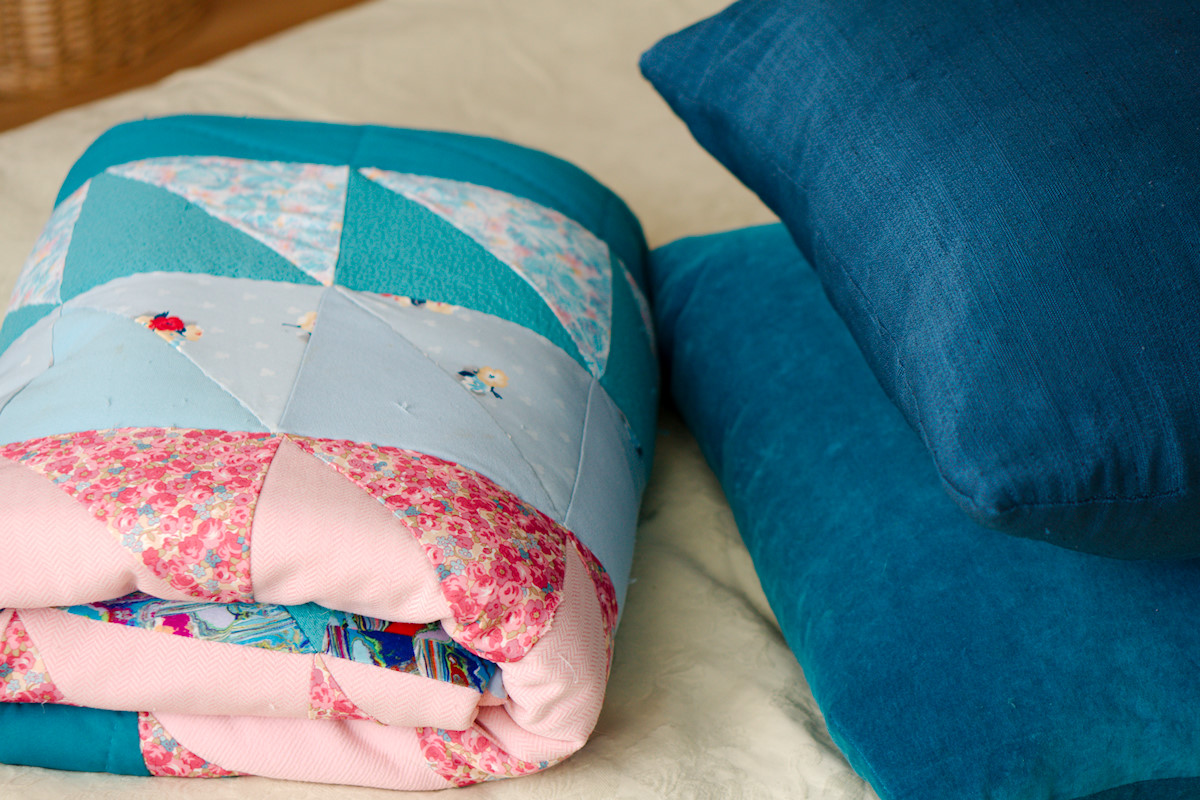
my fortrel polyester quilt, circa 1994
By some stroke of luck or fate, I won that raffle, and so I became the owner of one of these quilts.
But by the time this quilt was made, the aesthetic value of polyester quilt-making had improved appreciably. Perhaps it was specially made, all color-coordinated as it is, with the raffle in mind. Or maybe my grandmother (great-grandma's daughter) who has impeccable taste and artistry was involved in the design and execution.
However it happened, I came to own one of the most color-coordinated polyester quilts my great-grandma made.
It's not in regular use in our house. It's too big for the kids' twin beds and we don't need it on our bed with our down duvet. I use it when we need more bedding for guests, in the same way my mom uses her great-grandma quilts.
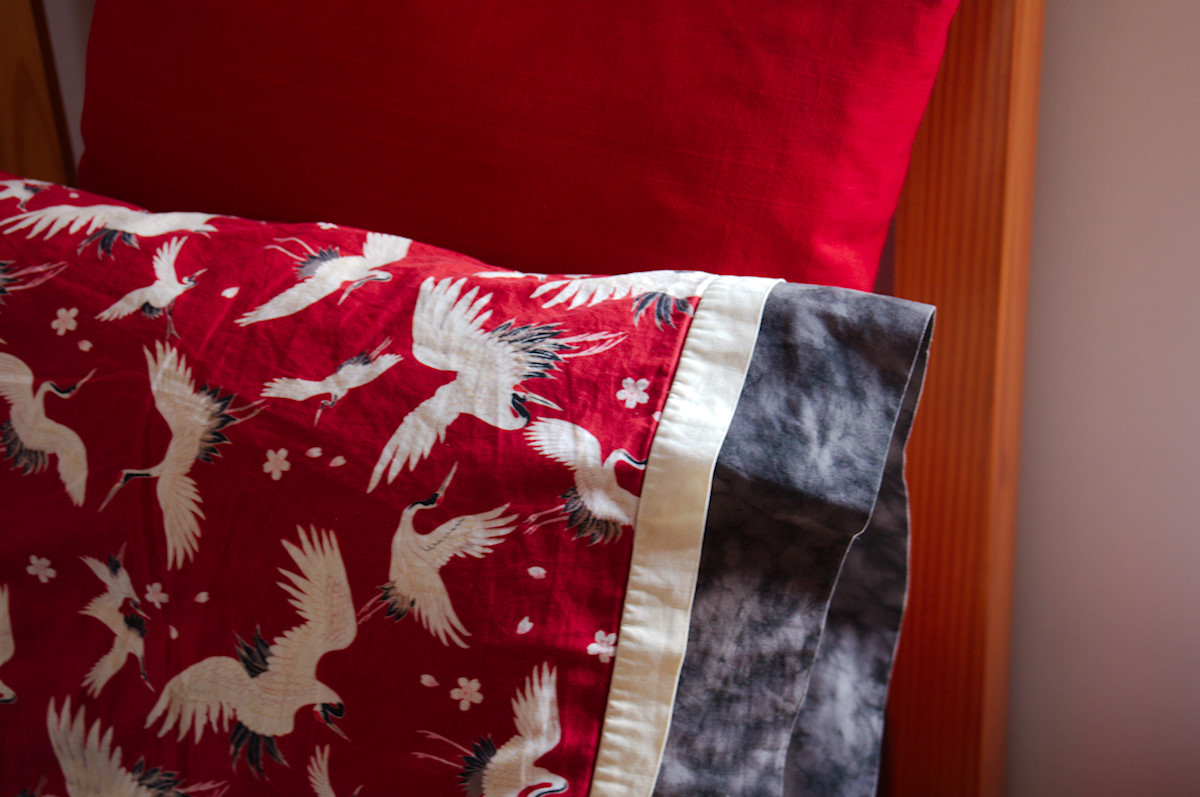
pillow case from Grandma Toews, circa 2012
decorative pillow by me, circa 2016
My grandmothers - all of them, not just my great-grandma - patched together quilts. Some were more utilitarian, reusing those fortrel dresses of the 70s. Many others were made with specially chosen cotton fabric, given as wedding and graduation gifts. They are creative works of art. They are creative labors of love.
The women I come from, my mom, aunties and grandmas; make beautiful, useful, warm and cozy things. They knit, crochet, sew, cross-stitch, quilt, appliqué, and weave.
I belong to a lineage of women makers, it is a heritage I am proud of and deeply grateful for. Women who make warmth out of scraps, beauty out of balls of yarn, homes out of handmade.
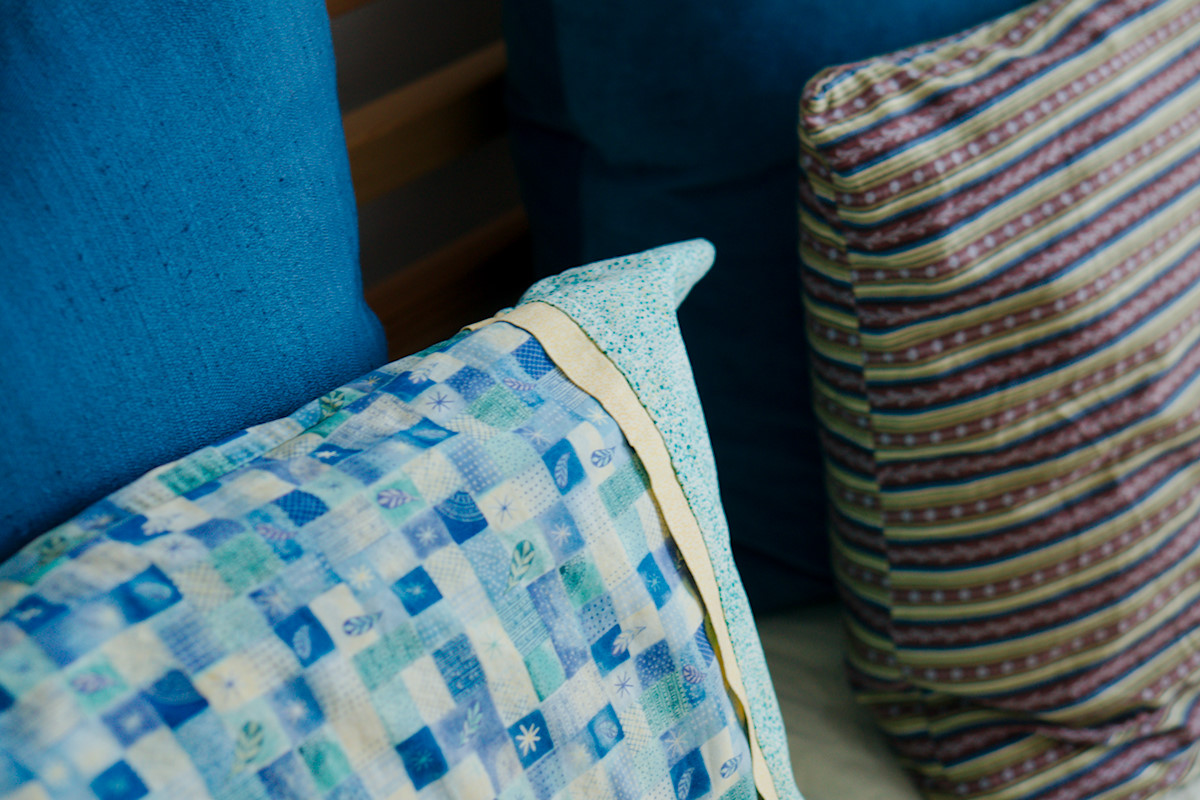
pillow cases from Grandma Toews, circa 2012
decorative pillow by me, circa 2016
A lot of those domestic arts have been lost in my generation. My cousins and I don't crank out the hats, scarfs, mittens, hand sewn clothing, quilts, and rugs that our grandmothers' produced. Our lives are very different than our grandmothers and we express creativity, meet artistic needs, and cozy our homes in different ways. But I am so grateful for the works of art, the works of love that have been given to me by the women makers in my family.
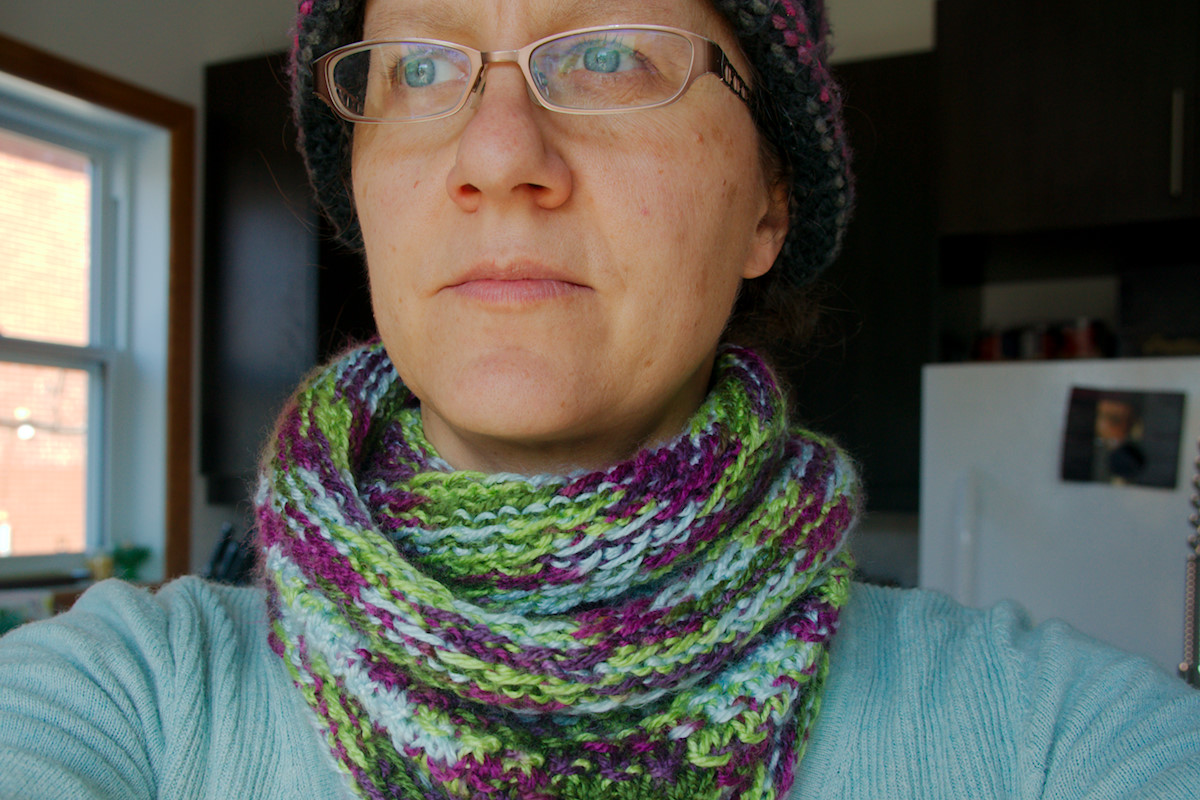
wearing Auntie Ruth created knits, circa 2016
Their example teaches me how to make a home, and reminds me why I crave making things with my hands.
Every handmade object in my home, the Fortrel quilt I use for making guest beds, the pillow cases we sleep on, the rug I step on first thing each morning when I get out of bed, the toques that warm our heads through winter, the decorative pillows I made from curtain leftovers, reminds me where I come from and who I come from.
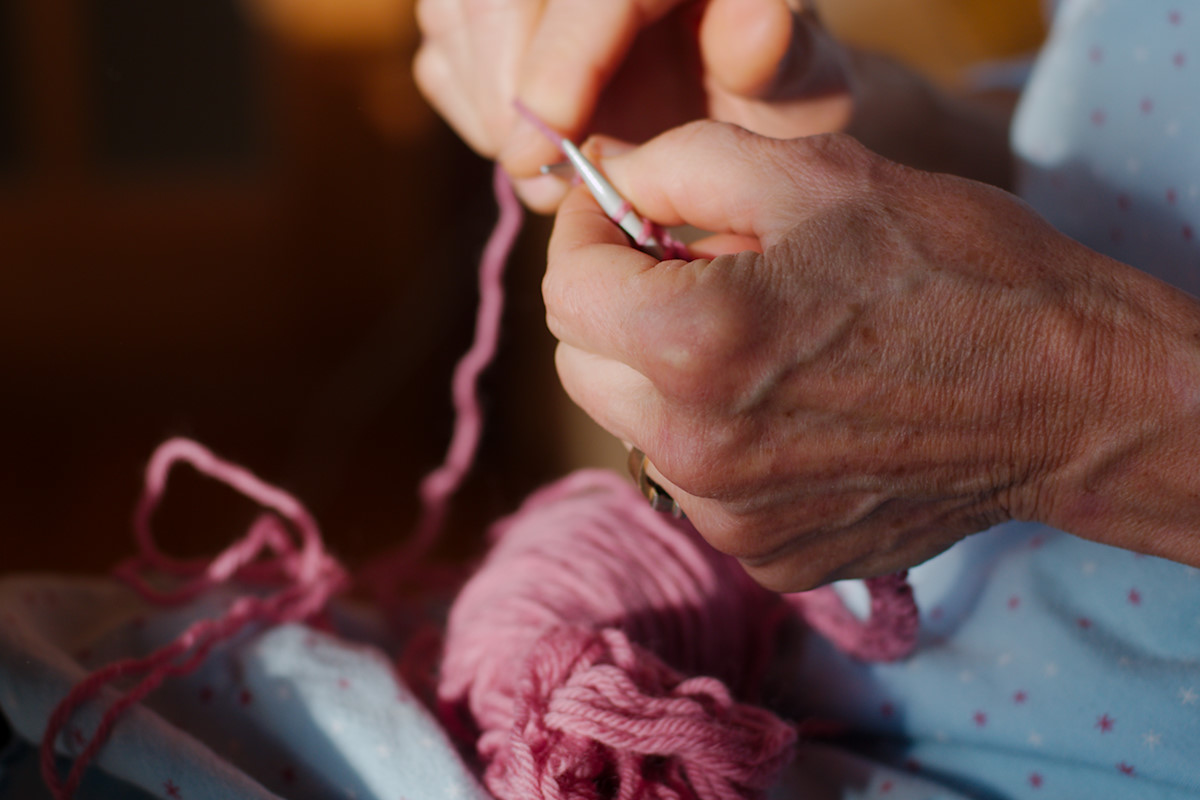
my mom knitting, circa 2011
These handmade objects communicate heritage and identity. They communicate an ethic of using up and making do. They communicate how to be creative with what's at hand.
They speak home. They speak beauty. They speak love.
Filed Under
You can subscribe to comments on this article using this form.
If you have already commented on this article, you do not need to do this, as you were automatically subscribed.
